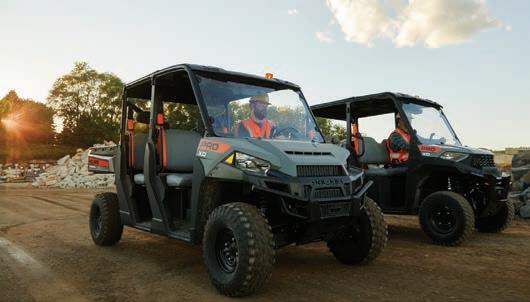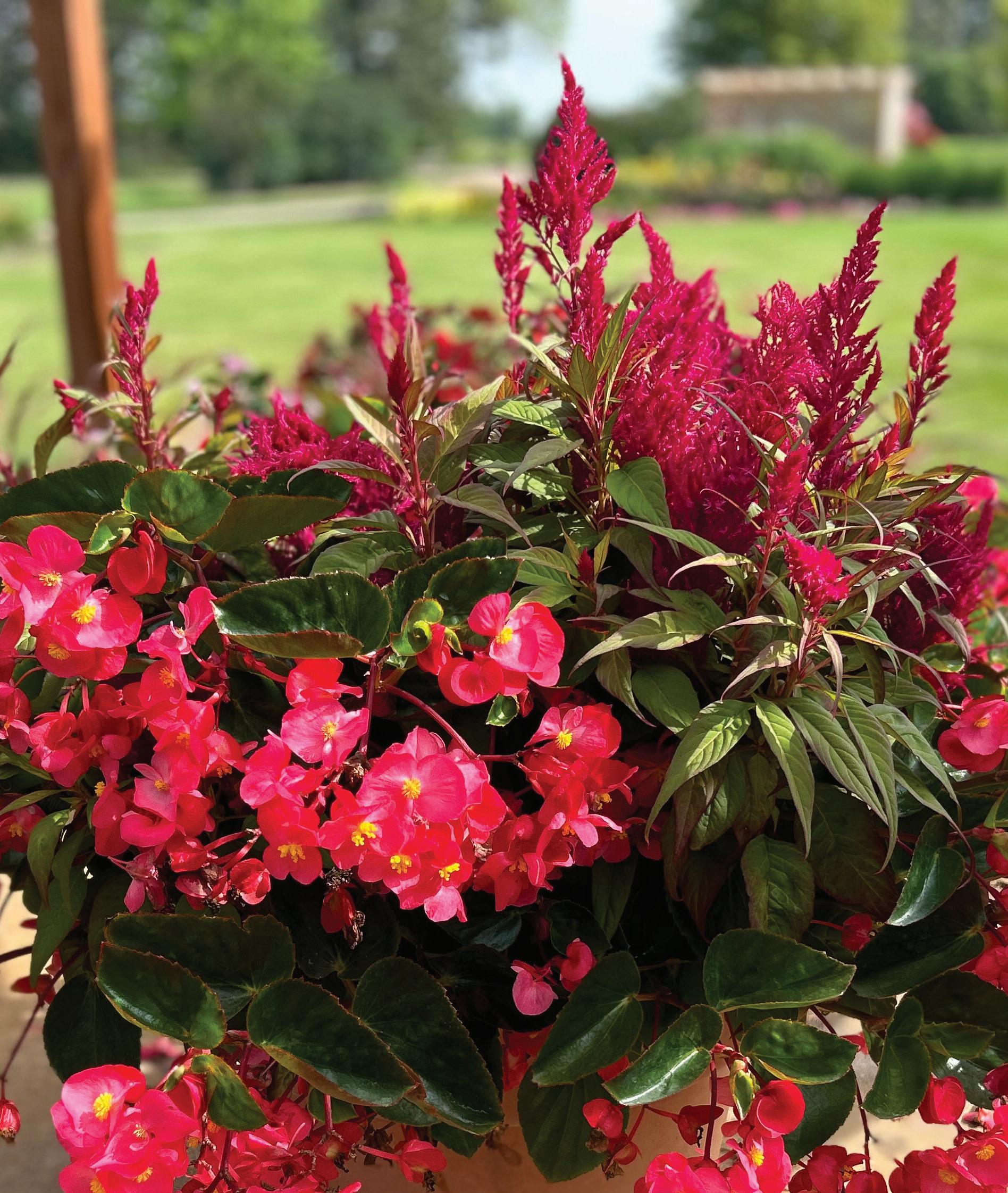





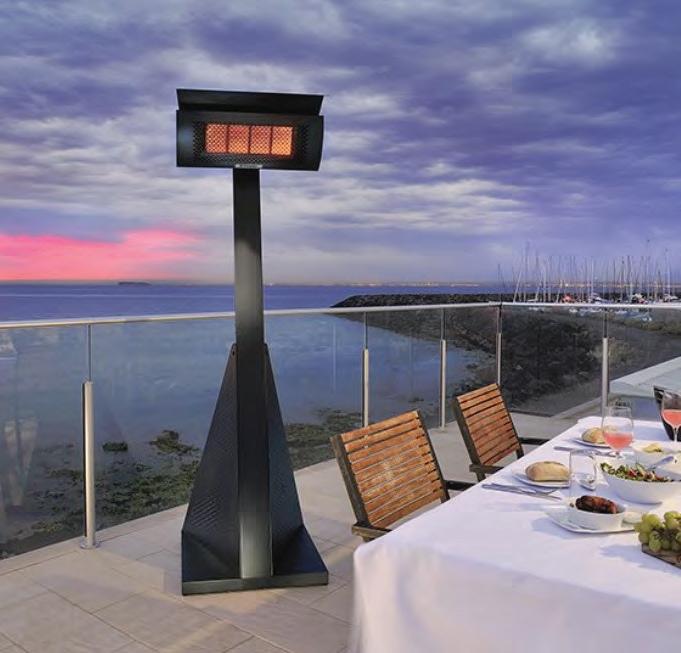
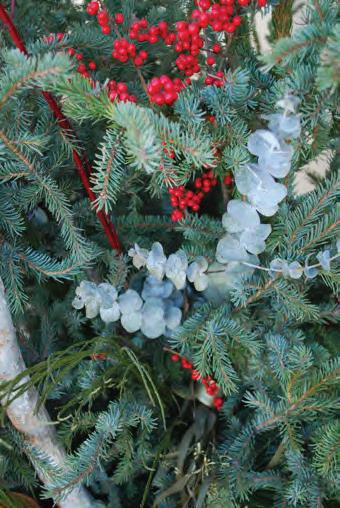
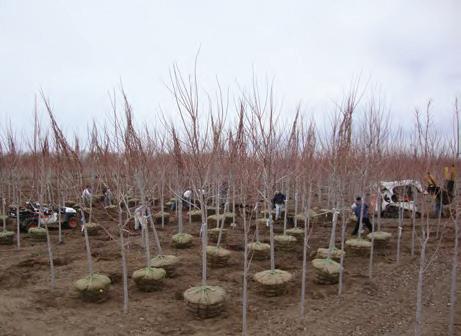
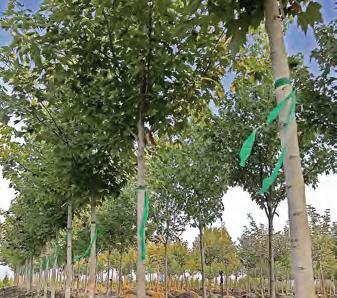













While this growing season was drier and warmer than usual, these beautiful annuals were the top performers at the West Central Research and Outreach Center.

Incorporating green infrastructure into municipal designs plans can provide multiple benefits to both residents and local economies.

Take care to inspect holiday greenery to prevent the spread of pests and diseases this holiday season.
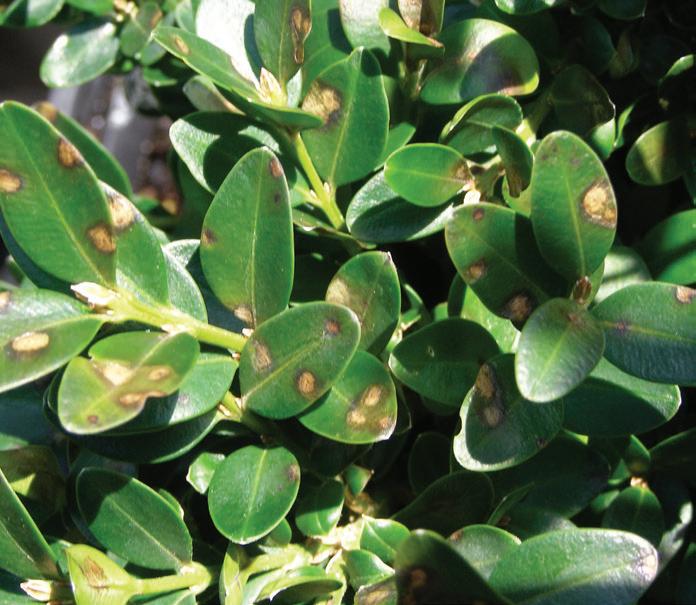
Change takes many forms and requires businesses to quickly adapt or risk being left behind.
Chris Heiler shares where AI can assist you in developing thoughtful content for your business.
President Randy Berg reflects on the bittersweet moments of beginning the transition of his business for retirement.
The Value of Collaboration
Government Affairs Director Felipe Illescas shares insights on building unexpected alliances for policy change.
It’s been a busy summer at MNLA. See what we’ve been up to!
Northern Green
Learn about registration options, the keynote speaker, the trade show, and more!
Communications Coordinator, Brianna Burns, discusses the importance of captivating social media content, building credibility in your brand, and leveraging partnerships for growth in the green industry.
October 2023 | Vol 46 Issue 10
Successful Businesses Grow Here
1813 Lexington Ave. N., Roseville, MN 55113
651-633-4987 • Fax: 651-633-4986
Outside the metro area, toll free: 888-886-MNLA • Fax: 888-266-4986 • MNLA.biz • NorthernGreen.org
Randy Berg, President
Berg’s Nursery, Landscape/Garden Center 507-433-2823 • randy@bergsnursery.com
Matt Mallas, Vice-President
SiteOne Landscape Supply
763-512-2849 • mmallas@siteone.com
Terri McEnaney, Secretary-Treasurer
Bailey Nurseries
651-459-9744 • terri.mcenaney@baileynursery.com
Susan Bachman West Bachman’s, Inc. 612-861-7600 • sbachman@bachmans.com
Kim Gaida-Wagener
Rock Hard Landscape Supply 612-619-3312 • kgaida@rockhardmn.com
Greg Krogstad Rainbow Treecare 952-922-3810 • gkrogstad@rainbowtreecare.com
Patrick McGuiness
Zlimen & McGuiness PLLC 651-331-6500 • pmcguiness@zmattorneys.com
John O’Reilly
Otten Bros. Garden Center and Landscaping 952-473-5425 • j.oreilly@ottenbros.com
Jim Shimon Willow River Company — Landscaping & Tree Farm 715-386-3196 • jimshimon@willowrivertree.com
Cassie Larson MNLA Executive Director 651-633-4987 •
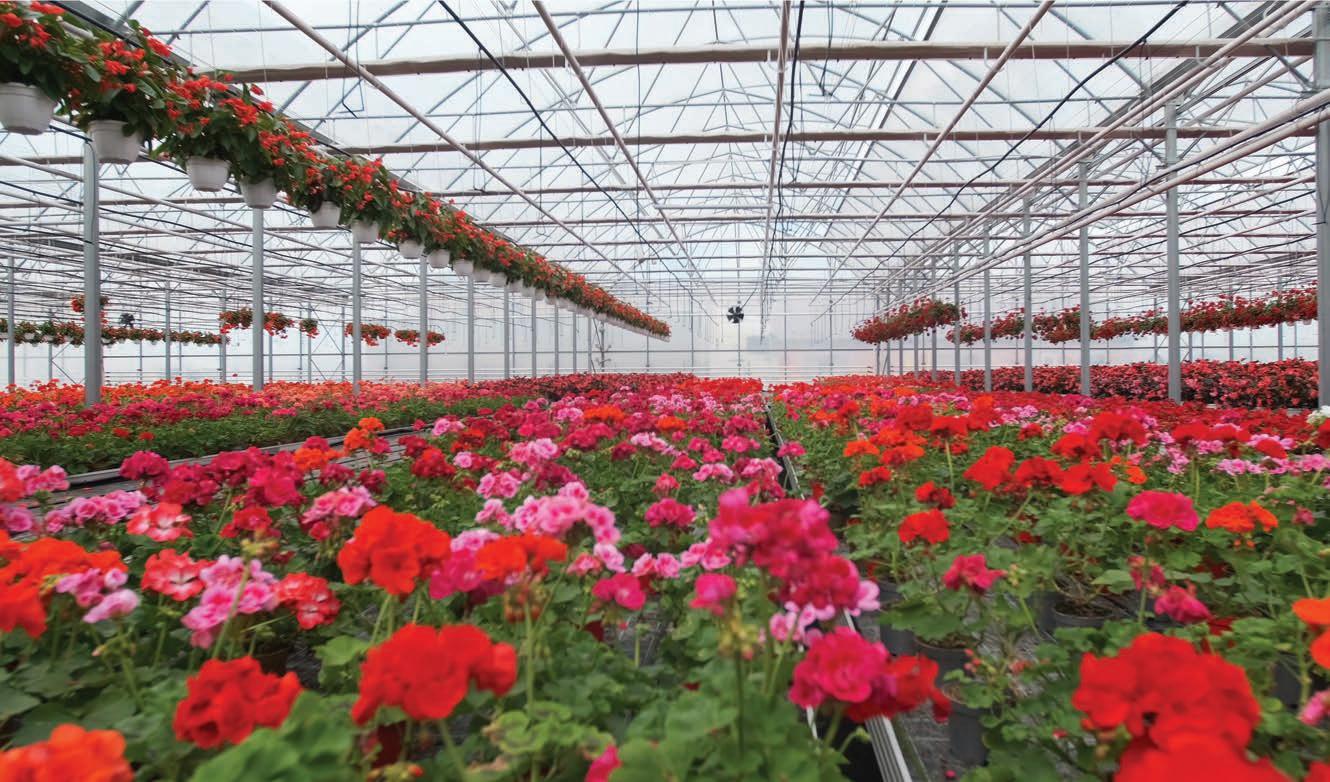






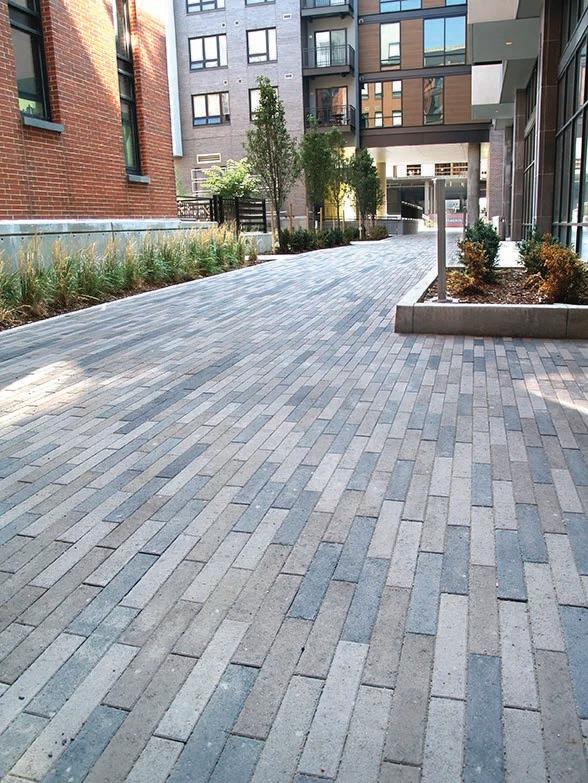



Information on industry events: MNLA.biz/events Free, member-only videos: MNLA.biz/OnlineEducation
by attending the

Workshop and have your current license scanned and checked by MDA. Applicators MUST bring their license
Volume 46, Issue 10: The Scoop is issued monthly, 12 times per year. All original works, articles or formats published in The Scoop are © Minnesota Nursery & Landscape Association, 2023, and may not be used without written permission of MNLA, 1813 Lexington Ave N., Roseville, MN 55113. Subscription price is $99 for one year, which is included with member dues.
Postmaster: Send address changes to The Scoop, MNLA, 1813 Lexington Ave N., Roseville, MN 55113.
Editorial Contributions: You are invited to share your expertise and perspective. Article ideas and manuscripts should, whenever possible, reflect real and specific experiences. Before submitting an article, please contact the editor at brianna@mnla.biz or 651-633-4987.

I’m reaching the time in my career when I’m looking at transitioning my business to the next generation. For me, this is ‘bittersweet.’
Bitter because my business is more than a job for me. The many years I spent building this business are very fresh in my mind. Starting with little to nothing it has been tough to say the least. Working alongside my wife Deb, who was always there to help, we often worked seven days a week under tough conditions. The work we did in those early years included unloading Christmas trees in icy cold sleet, planting bare root nursery stock, and unloading semi-trucks full of plants, all seem like yesterday to me. We did all this work for little to no money. Everything was put back into the business to help it grow. The only way we made it was with Deb’s income from her job as a physical therapist. All these experiences are burned into my memory. The work and the perseverance created a business from literally nothing. When a person is invested in a project it’s hard to look at it as just a job. This business is my baby. I’ve watched it grow and mature. It is odd however that I never really feel comfortable. The seasonality, lack of abundant help, low-ball/low-quality competition, and unstable economy keep me keenly aware that I always need to be vigilant.
The sweet. I am blessed to have my son working alongside me. My son Luke runs the landscape division of the company. Landscaping provides the highest revenue for the business. It is the most complex division: mixing creative design with high-quality installation that often includes hardscape, softscape, lighting, irrigation, and more. Luke is interested in continuing and taking the helm soon. Passing on a business to a family member is different than selling it to an outside party. The concerns regarding the transition include the difficulty and complexity of business in today’s world, the uncertainty of what challenges are coming next, and whether one person can handle the business as it becomes too big to be small but too small to be big limiting the funds available to attract much-needed employees.
As I struggle with these thoughts it dawns on me that there have always been struggles and challenges. The problems or opportunities have always been there. Yes, they were different back when I started, but they didn’t stop me from pursuing my dream. I think the wisdom and the resilience of the young are underestimated, in this case, it’s my son Luke. Sometimes it’s time to believe and trust in the wisdom that exists.
This course has been submitted to the Minnesota Dept. of Labor & Industry for approval for eight hours of continuing education requirements for the Power Limited Technician License, including 2 hours of code and 6 hours of technical training oriented specifically toward the landscape industry.



Pending approval by the Minnesota Dept. of Agriculture (MDA), this workshop meets Commercial Pesticide Applicator Requirements for Category A (Core), Category E (Turf and Ornamentals), as well as an option to add Category P (Vertebrate Pest Control).


Licensed applicators with Categories A and E who last attended a recertification workshop in 2022, and newly-licensed pesticide applicators in 2023, must attend an MDA-approved workshop by December 31, 2024. By attending the Pesticide Recertification class and scanning in and out onsite with staff of MDA, applicators will obtain recertification credit.



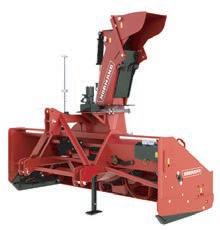
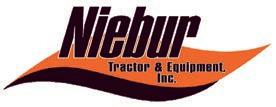




Our industry is pretty unique; we have our own science, seasons, technicalities, and challenges. However, when it comes to creating policy changes at the Capitol, it is extremely valuable to look for strategic partnerships that can help our efforts; and when doing so, we have to make sure to cast a wide net because we never know who has a stake in the changes that we are seeking. In fact, the most helpful partnerships are usually with groups that we normally would not imagine having shared interests.
When forming coalitions or collaborations, we must not just think in terms of common goals or shared priorities, we must also be aware of shared opposition. As the saying goes, “An enemy of my enemy is my friend”, even if it’s just for one session. In addition to opposition, we also should look at our relationships, because if we can introduce potential partners to our champions, we will add value to a partnership. This might not make much sense without seeing these dynamics play out in real-time, but here is an example of an unlikely partnership that we recently formed in the pesticides space.
Just last month, I was part of an advocacy panel at the Humphrey School of Public Policy at the University of Minnesota. I ended up chatting with a young man that was representing the railroad industry. During our conversation, I learned that they too have a significant interest in ensuring that pesticide regulation stays within the Department of Agriculture and not be open to city governments. He explained that they heavily rely on pesticides to spray around their tracks to ensure that weeds do not engulf and cover the tracks. Apparently, weeds make visual track inspections extremely hard to perform and there can be critical repair needs that can go unnoticed if the track is covered with weeds. Missing these types of repairs can result in deadly trainrelated accidents.
So, long story short, I found a great partner and ally in our pesticide efforts. We continued to communicate in the weeks after the panel, and now we have a letter of support from the railroad industry and a new helpful addition to our coalition.
I hope that you find this helpful and please let me know if I can ever assist in any way. You can reach me at felipe@mnla.biz and 612-418-5382. Thank you for all your work.
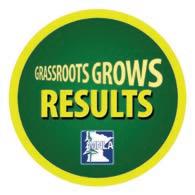
Research on annual flowers at the University of Minnesota West Central Research and Outreach Center (WCROC), Morris, takes place over four acres in an impressive public display garden. Plant breeding companies from around the world send their annual flower seeds, vegetative cuttings, and unrooted cuttings to the WCROC to be part of our prestigious annual flower trial. Seeds begin to arrive in January, while unrooted cuttings and vegetative plugs start to arrive in March, all with the goal of having healthy transplants by the end of May in time for Minnesota’s growing season.
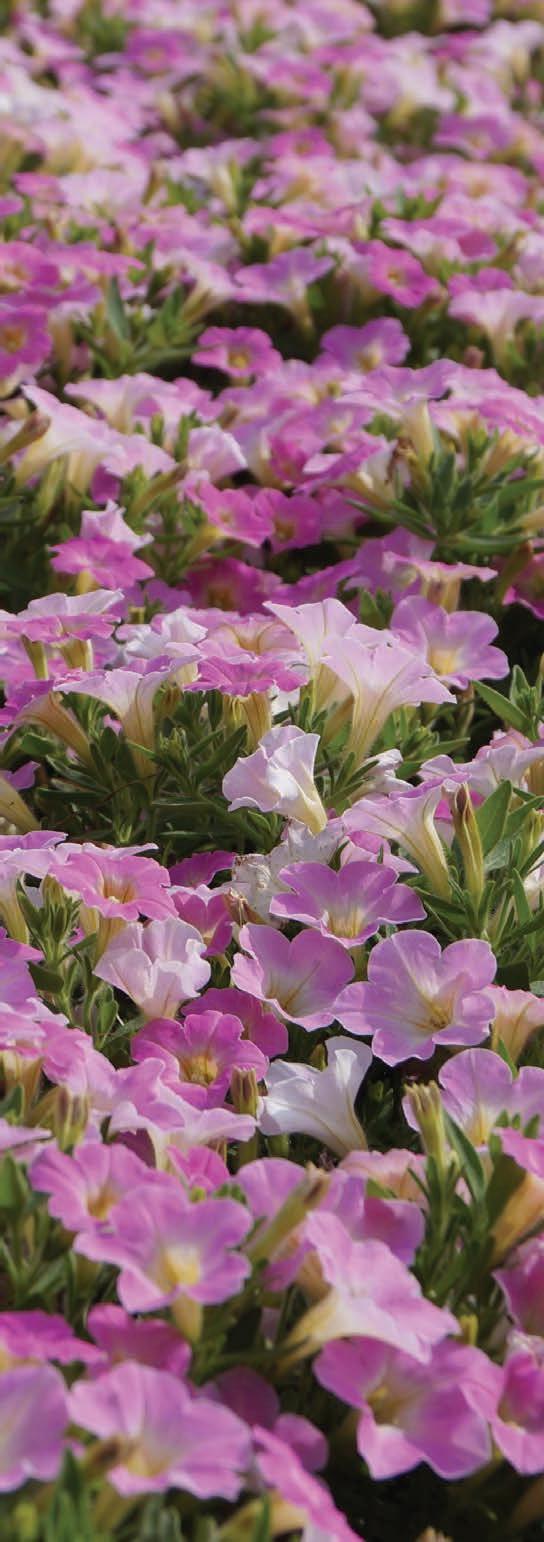
Annuals are grown in hanging baskets, containers, or planted into landscaped beds within the Horticulture Display Garden. All annual flowers are on display for public viewing from early June into September. Visitors can take note of their favorite cultivars and see how plants respond to regional weather conditions. We are seeing a growing trend in the number of annual flowers that are bred for containers, which is likely due to the rise in consumer demand for container annuals. Companies are expanding into combination planters, such as celosia with begonia (see one of our Top Ten for an impressive example!).
The 2023 growing season for west central Minnesota was drier and much warmer than usual, which created a stressful start for annual bedding plants. The average temperatures for June and July were several degrees higher than historically average, and precipitation was several inches less. Despite regular irrigation, plants exhibited stress by having longer establishment times after planting, slower growth rates, and less flowering while these conditions persisted.
As part of the annual flower trialing process, plants are evaluated several times during the growing season to assess each variety’s performance. We use a 1 to 5 scale for providing a horticultural rating (1=poor, 2=below average, 3=average, 4=above average, 5=excellent). Plants are rated on performance, color, vigor, uniformity of habit and flowering, flowering numbers relative to others, insect and disease resistance, and uniqueness. The data is taken by the same individual every time to reduce variability in scoring. Only the highest rating cultivars earn the distinction as a Top Ten Performing Annual. Plant breeding companies rely on the valuable feedback from our annual flower trial to market and improve their cultivars. Evaluations from the WCROC annual flower trial are shared with participating plant breeding companies; they may in turn make plant improvements to their cultivars and enter the flower back into trial for another season. Our annual flower report is also made available to commercial nursery producers, floriculture professionals, grower associations, U of MN Extension, and U of MN Master Gardeners to provide cultivar recommendations for Minnesota.
A large, waxy type begonia with very sturdy stems that support an upright and strong branching habit. Its large bright pink and abundant blooms were a knock-out all season long throughout varying temperatures. Flowers were held above the striking green foliage and grew in a very uniform and compact habit. Performed best in a container located in a shady location.

This unique combination planting of celosia with begonia made for a stunning display! The celosia provided height in the center of the container, while the begonia filled out beautifully around the edges. Flamma Rose offers an eye-catching bright color that doesn’t fade. Viking® Explorer Rose on Green, a 2022 AAS Ornamental Winner, boasted rose-colored flowers that stood out against the glossy green foliage. Together, they had outstanding garden performance in a large container this season.
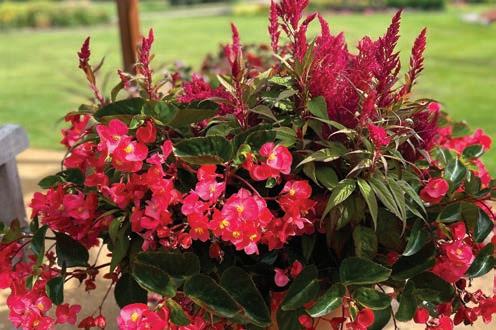
Bumble Bee™ Hot Pink has an attractive bright yellow eye surrounded by hot pink. This semi-trailing Calibrachoa had excellent garden performance and grew evenly and uniformly in a large hanging basket.


This stunning shade plant has a lime green edge with a bright raspberry and maroon center. It thrived in our garden bed and grew extremely uniform in a semi-shaded area. Looks fabulous on its own or in combination with other shade plants. Talavera™ Pink Tricolor adds a dramatic touch and would do well in large pots or in the garden landscape. Grows to 20-36 inches.
Itsy™ Pink really shined in our 2023 trial as a petite petunia. With exceptional uniform growth and dainty light pink flowers that covered the foliage, it spreads 18-24 inches creating a beautiful blanket in the landscape bed.

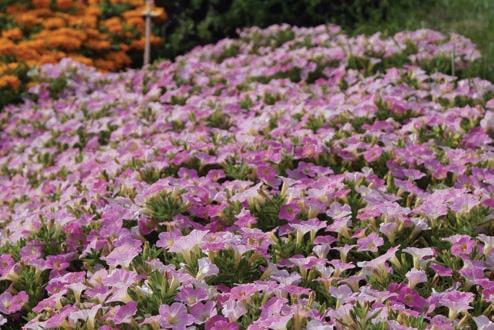
This spreading type of petunia provides an endless supply of blooms all season long despite changes in weather conditions. The bright pink color stands out nicely against the foliage and attracts a lot of attention. This plant spreads evenly up to 24 inches wide and stays filled in all season, without losing foliage at the plant’s center. Makes for a great border plant. Performed best in the ground in full sun.
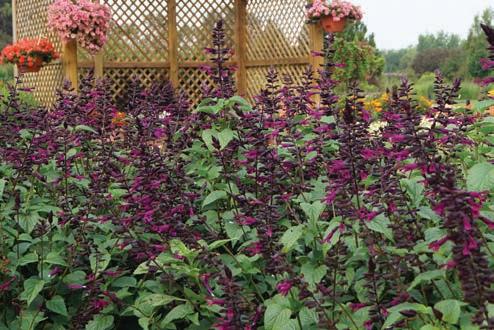
Pollinators go crazy over Salvia Plum Crazy! Hummingbirds, bees, and butterflies were frequent visitors to this annual all season long. Its deep purple flowers make for a striking contrast to the healthy green foliage. With a height of 36 inches or more, it’s excellent for use as a garden background.
A high-performing snapdragon in July and August? Yes! The DoubleShot Crimson Red delivers. Its open-faced flowers are held up on strong tall stems and produce an abundance of deep red color all season long. Plants grow 18-20 inches tall and do well in sunny locations.
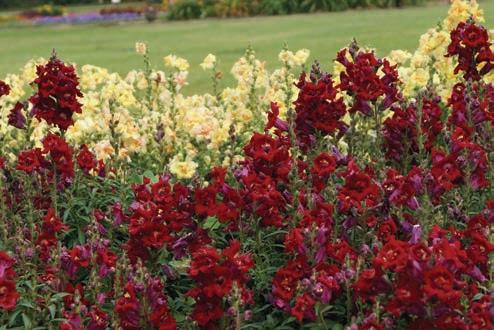

A real knock-out in our Garden this year was the Sunflower Desert Sun. Standing nearly 6 feet tall, its unique flower head presented a burnt orange center with a bright yellow ring around it. With minimal staking, this sunflower held its own under the weather conditions of west central Minnesota.
This zinnia exhibits true clean white color. Not only that, but also great disease resistance which leads to the clean appearance of both the foliage and flowers. The large white flowers stand above the foliage. With a branching habit, this plant has uniform growth that appears compact despite its size of 18 inches wide and 12 inches tall. It performed best in full sun in the ground.



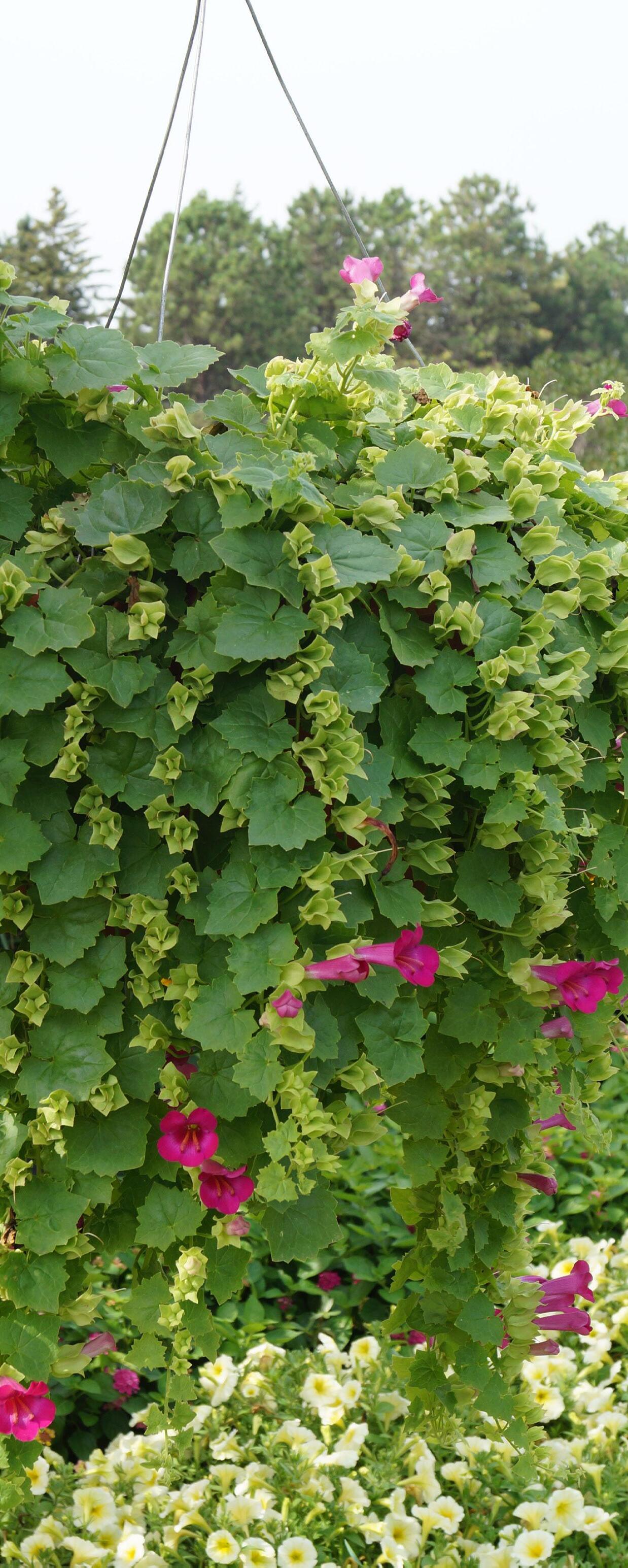
With nearly 350 flowers on trial, there are bound to be a few varieties that catch our eye even though they didn’t quite make the cut as a Top Ten. Despite having a slow start, Lophospermum Lofos Compact Rose wowed our horticulture staff late in the season with its beautiful flowing foliage and bright flowers, making it an eye-catching display in a hanging basket.
Even though the annual flowers are under evaluation, the plants are placed into an aesthetically pleasing design, allowing visitors to enjoy the beauty of the Garden. The Horticulture Display Garden has been an All-America Selections (AAS) Display Garden since 1990. The AAS award recognizes a flower or vegetable variety proven to have superior performance throughout the North American continent. An AAS Display Garden provides the public an opportunity to view the new AAS winners in an attractive well-maintained setting. Additionally, the Horticulture Display Garden is the only AAS Trial Ground site in Minnesota, where AAS entries are planted next to comparisons and evaluated by an AAS Trial Judge.
The Horticulture Display Garden is open daily from dawn until dusk; admission is free. Voted as the “Best Public Display Garden in Minnesota” by WCCO, the Horticulture Display Garden is truly a gem in the Upper Midwest.
For a complete list of all trial results, please refer to www. wcroc.cfans.umn.edu/flower-research-results.
All flowers in the Horticulture Display Garden are labeled, allowing visitors to take note of top-performing cultivars under regional conditions.
The Horticulture Display Garden is open daily from dawn until dusk; admission is free. The Garden is located at:
46352 State Hwy 329 Morris, MN
For directions, visit wcroc.cfans.umn.edu.
Greenius makes it simple and easy to train and develop staff and c rews using on-demand training and 360-degree employee reviews whether you’re at the office or in the field.
Over 1.3 MILLION Greenius training courses completed
30,000+ HOURS of training videos consumed
On-demand Employee Training
Deploy an automated training program that ensures your teams get the training they need, when they need. Eliminate jobsite bottlenecks and rework incidents.
Expansive Tailgate Talk Library
Keep your teams focused on the objective and safe on the job site.
Performance Reporting
Better manage your staff with meaningful insights into their training, on-the-job performance and create a culture centered around continuous improvement.
360-Degree Performance Reviews
Pinpoint areas for growth and development while uncovering how you can build a team by using their immediate feedback.
Access Training on Any Android or iOS Mobile Device
Avoid wasted time between job sites.
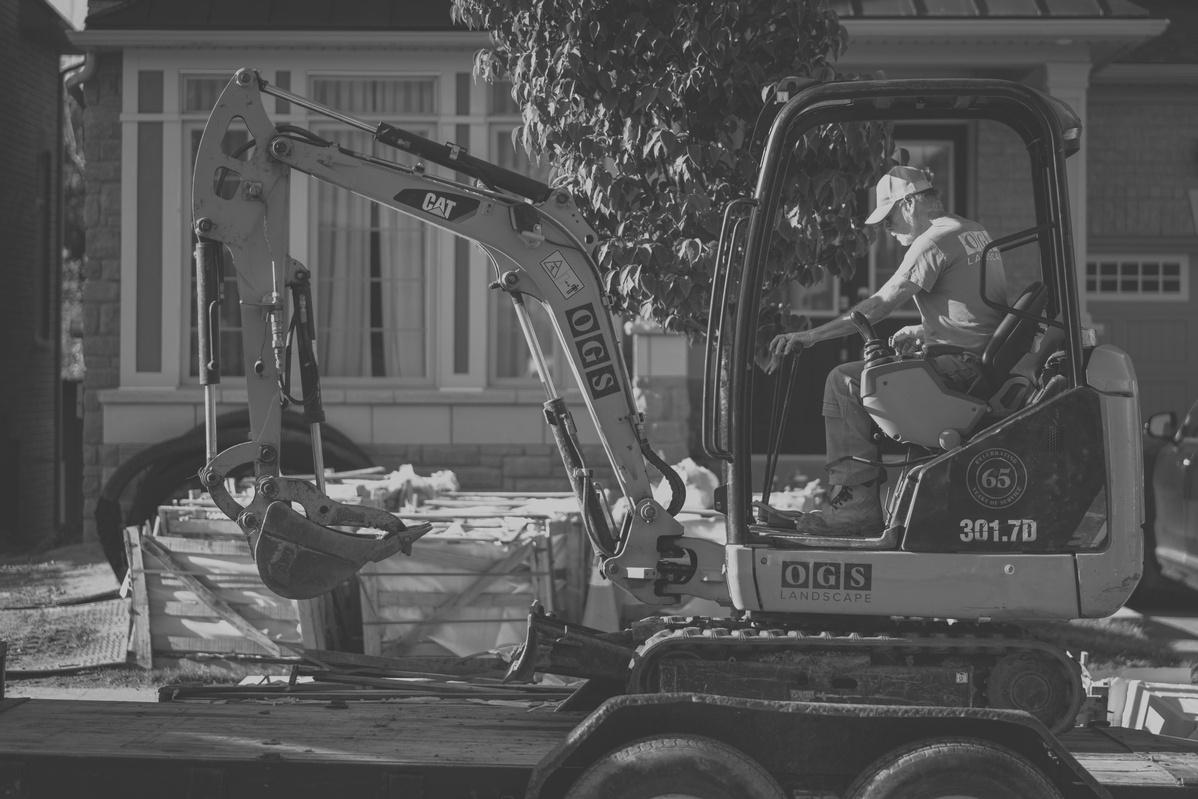
WE ARE PROUD TO PARTNER WITH
FREE 2-month license of Greenius Training Software ($250 savings) +
FREE Unlimited users 2 months ($200+ savings) +
FREE Unlimited Training Courses + FREE Custom Implementation ($347 savings)
Total Association Member Savings: $797
MNLA MEMBER OFFER: https://share.golmn.com/MNLA
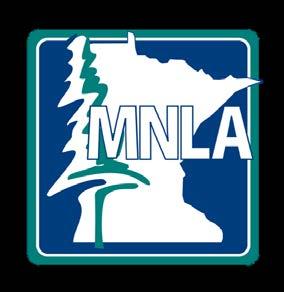
GoGreenius.com

August is filled with unique tours and events at MNLA. We kicked off the month with a maintenance-focused tour at the Charlotte Partridge Ordway Japanese Garden at Como Park. The group asked staff in-depth questions about pruning and seasonal maintenance, toured the gardens, and wrapped up the day down the road for a social hour at the Como Park Golf Course. Later in the month, the MNLA Landscape Tour traveled around the Minnesota side of the Saint Croix river valley. The group had a wonderful time at private gardens, the Carpenter Nature Center, various nurseries, and ended the day at Rustic Roots Winery for a relaxing end to a beautiful tour.





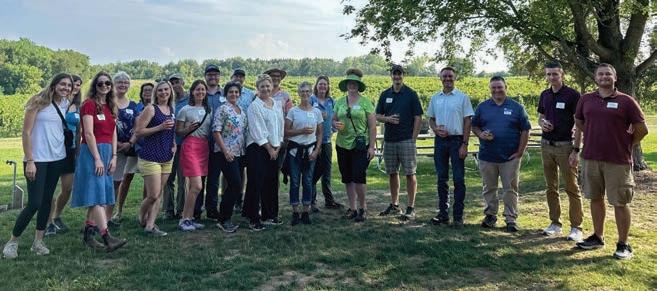
AS YOU COMPLETE YOUR WARM
WEATHER PROJECTS, START PREPARING FOR COLD WEATHER MAINTENANCE
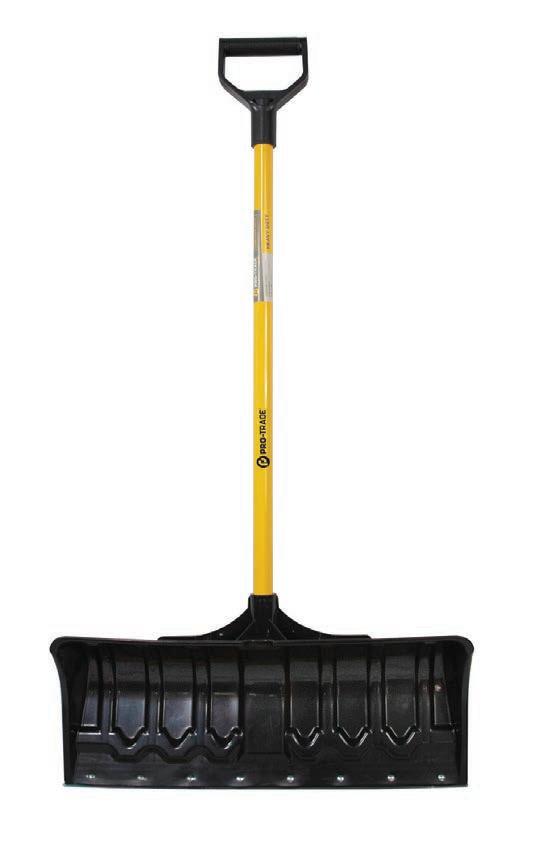
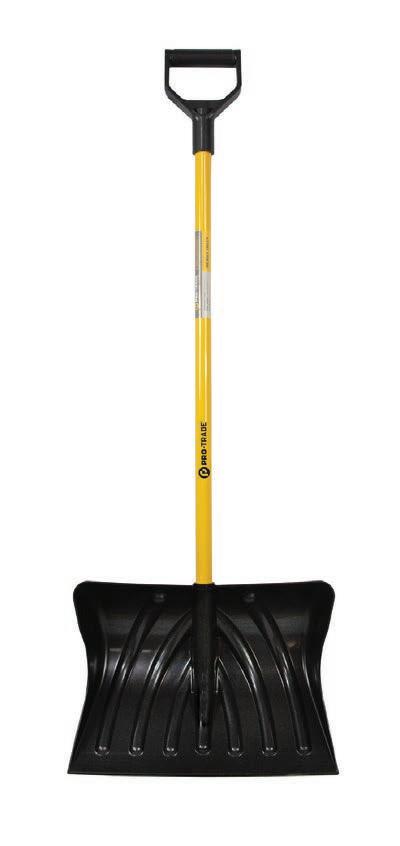

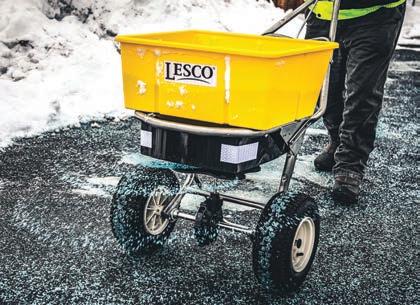


MNLA Associate Director Jon Horsman took a road trip to Wisconsin in the middle of August to be a part of the Carlin Horticultural Supplies / ProGreen Plus BuyerFest 2023. On the way he was delighted to visit long-time MNLA member and Northern Green exhibitor Northern Family Farms. “What an impressive operation!” Jon said. “I was welcomed so warmly and Dan Stetzer gave me the grand tour. I love spending time with green industry folks who love their work and are putting beautiful plants into the world!”
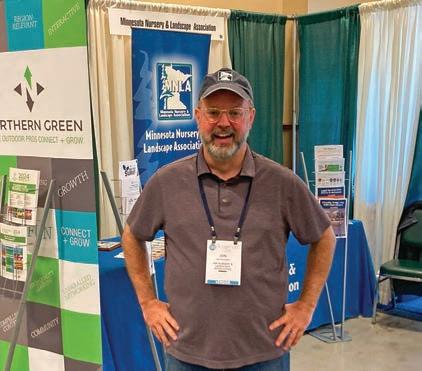


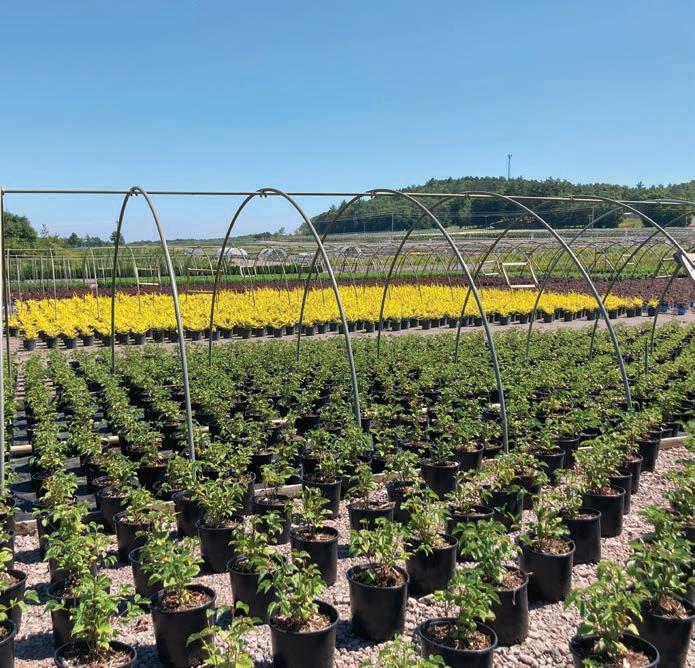
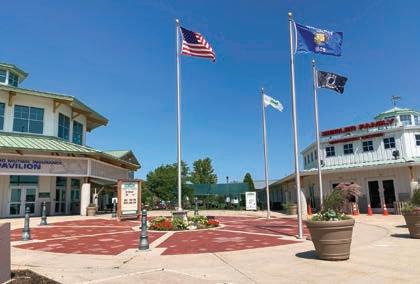



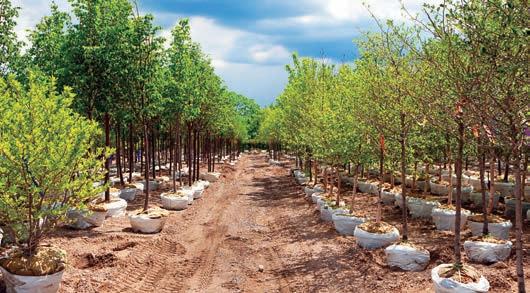



 Jacob Westlin, DeepRoot
Jacob Westlin, DeepRoot
This content has been reprinted from the DeepRoot Green Infrastructure blog (www.deeproot.com/blog)
As the social and environmental benefits of green infrastructure (GI) gain more and more traction among municipal project planners, the question of economics becomes paramount: how affordable is GI versus other city investments, like gray infrastructure, and what are the long-term financial implications of adopting a green infrastructure strategy?
Let’s explore exactly what green infrastructure is and identify its numerous advantages (with a focus on the economics). Indeed, while the perceived front-end cost of GI often presents an obstacle for landscape architects and city planners, understanding its long-term financial value — and how a well-executed green infrastructure strategy will actually save money in the end — is crucial, and should ideally lead to greater implementation: a win for cities and citizens alike.
There are numerous definitions of what green infrastructure is. One of the earliest attempts to define GI came in the mid1990s from The Florida Greenways Commission: “A strategically planned network of natural areas, parks, and other green spaces with conservation value.” Green Infrastructure Ontario defines it as “The natural vegetative systems and green technologies that collectively provide society with a multitude of economic, environmental, health, and social benefits.” The EPA focuses on stormwater in its categorization, defining GI as “Using soils, vegetation, and other natural systems to infiltrate, evapotranspirate, and/or recycle stormwater runoff.”
Regardless of its precise definition, green infrastructure is a landscaping strategy incorporating green elements to benefit the region environmentally and socially — and, indeed, as we’ll examine further, economically. Examples of these elements are wide ranging and include urban forests, bioswales, stormwater ponds, green roofs, parks, gardens, wetlands, and more.
The many social and environmental benefits of green infrastructure are becoming well established among project designers. Connecting residents to nature in an urban setting, while also using that nature as a functional system to support the health of the local environment, is a growing practice within the landscape architecture industry. Some of the many social and environmental perks of GI include:
• Lowered Heat Island Effect: The heat island effect occurs in urban areas in which there is little to no tree coverage providing shady respite. The consequences of this are immense, including premature death. Growing large, healthy trees helps mitigate this dangerous environmental condition.
• Improved Public Health: A number of improved physical health attributes have a proven correlation to the existence of green infrastructure, including lowered pollution, reduced heat, and heightened physical activity and lowered mental health concerns among residents.
• Stormwater Treatment: Many GI elements are able to assist in at-source stormwater treatment, cleaning the rainwater



• Explore the professional profiles of speakers and attendees

• Send in-app messages and exchange contact info

• Network and find attendees with common affiliations, shared networks, and social profiles
• Receive update notifications from organizers
• Access the event agenda, GPS guidance, maps, and parking directions at your fingertips

Job Boards are no longer part of the physical show—they’re now in the app. Your listing stays posted before and after the show! Click on Community at the bottom, then scroll down to Job Openings Search openings already posted, or fill in the form to post opportunities at your company.


before it enters the sewer system or local waterways and reducing peak-flow concerns during major storm events.
• Green Community Gathering Space: The health and vitality of a community is a difficult thing to quantify; nonetheless, it’s evident that by providing residents with a welcoming outdoor gathering space, the chances of greater community engagement are exponentially increased — whether it’s simply meeting for a walk or organizing largely attended events such as concerts or farmers markets.
• Climate Change Mitigation: By incorporating natural carbon-removing elements like trees, green infrastructure helps slow the progression of climate change.
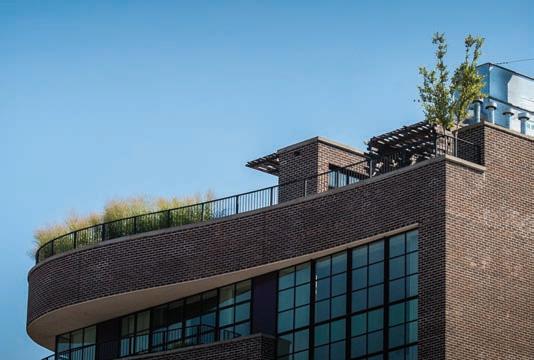
Many of these social and environmental perks also include a financial component, as we’ll examine in greater detail.
Less understood when it comes to the advantages of green infrastructure is the multifaceted positive impact it has on the economic health of a community. Two illuminating Pennsylvania-based studies were conducted that help us better grasp the true financial benefits of GI: one is from Chester County (population 500,000) in which they studied the potential return on investment of GI, and the other in the town of Lancaster (population 60,000) where they assessed the impact a proposed green infrastructure plan would have on the local community. There are also a number of additional regional assessments upon which we draw to provide statistical context from areas across the country. Please check out the comprehensive ICMA research paper, “Financing Green Infrastructure,” for a complete look at this work.
Managing on-location stormwater is one of the most important factors in any urban landscaping initiative.
Paved areas create an increase in unclean water from street and sidewalk sediment and pollutants, water runoff that eventually drains into local rivers, lakes, and oceans. By implementing a GI system — like the DeepRoot Silva Cell —

that helps treat this stormwater before it even reaches the sewer network, the downstream cost savings are significant.
• The Chester County study determined that the value of GI stormwater pollutant removal (per acre) was substantial: $16 per year for nitrogen, $256 per year for phosphorous, and $1,595 per year for sediment.
• The total estimated value of GI stormwater pollutant removal determined by Chester County was $107 million in total avoided costs (and $8.2 million in other annual water-quality benefits).
• In addition to helping with water quality, green infrastructure can also improve urban air quality. Natural greenery like trees assist in removing harmful pollutants from the air while also capturing carbon, benefitting both the local community and the environment at large.
• The Lancaster study estimated $1 million in yearly airquality improvements provided by GI (removing nitrogen dioxide, PM-10, and sulfur dioxide). The same assessment conducted by the larger-population Chester County estimated the GI air-quality value at $13.5 million annually.
• The carbon-capture benefits of protected GI open spaces were approximated at $120 million by Chester County.






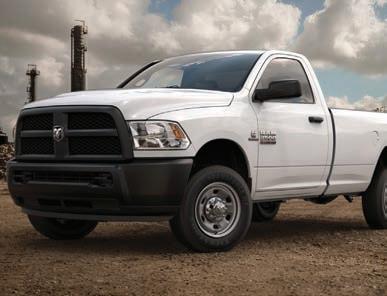








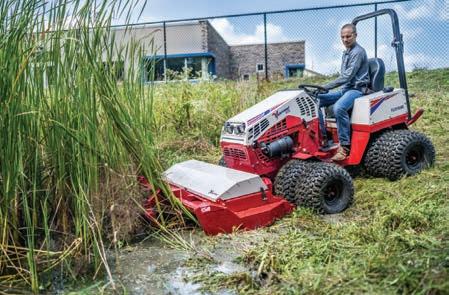
A limited number of discounted room rates have been secured for Northern Green 2024 at the hotels below. We encourage you to book your rooms early to ensure you get the ideal room and rate for your circumstances. Space and discounted rates are limited at each hotel, so book early to get your first choice.
Note: Prices at most hotels will go up after December 20, 2023. Book early for the best rates!
HAMPTON INN & SUITES
200 7th Street W, St. Paul, MN 55102
Rate: $115 (single/double rate)
Reservation Line: 651-224-7400

Parking: Self parking not available. Valet: $20.
THE SAINT PAUL HOTEL
350 N Market Street, St. Paul, MN 55102
Rate: $139 (standard room)
Reservation Line: 651-292-9292 or 800-2929292 (Ask for the 2024 Northern Green rate)
Online Reservation Link under “rate type” choose “I have a code” and enter 12123MNLA.
Parking: Self parking not available.
Valet: Rates vary (call for information).
HOLIDAY INN ST. PAUL DOWNTOWN
175 West 7th Street, St. Paul, MN 55102
Rate: $134 (single/double rate)
Reservation Line: 651-225-1515
Parking: Onsite parking in connected ramp ($21 per day). Offsite parking directly across the street (prices vary).


INTERCONTINENTAL ST. PAUL RIVERFRONT
11 East Kellogg Blvd, St. Paul, MN 55101
Rate: $112 (single/double rate)
Reservation Line: 651-292-1900 or 866-686-2867 (identify yourself as a Northern Green participant)
Parking: Self parking not available. Valet: $32.
Metro Yards: Fall Hours
Metro Yards: Fall Hours
Monday - Friday: 7am to 5pm
Monday - Friday: 7am to 5pm
Monday - Friday: 7am to 5pm
Your locally owned headquarters for landscaping supplies and materials!
Your locally owned headquarters for landscaping supplies and materials!
Your locally owned headquarters for landscaping supplies and materials!
• VERSA-LOK retaining wall systems
• VERSA-LOK retaining wall systems
• VERSA-LOK retaining wall systems




• Willow Creek pavers and kits
• Willow Creek pavers and kits
• Willow Creek pavers and kits
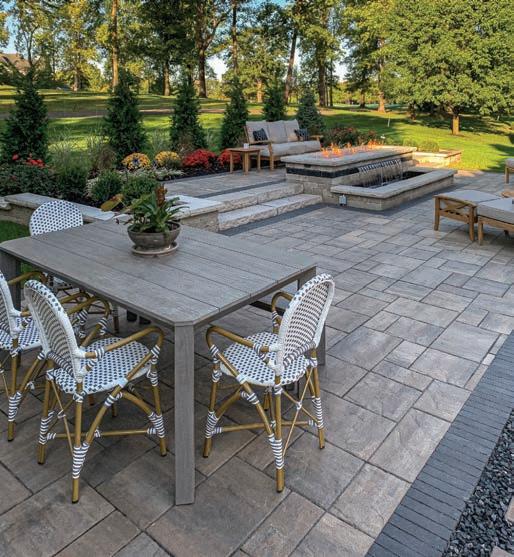
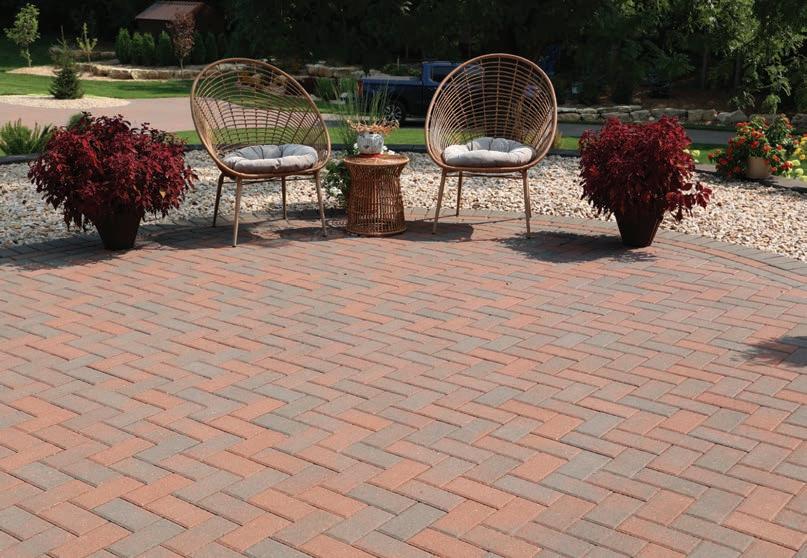
• Unilock pavers
• Unilock pavers
• Unilock pavers
• Rosetta hardscapes
• Rosetta hardscapes
• Rosetta hardscapes

• Porcelain landscape tiles
• Porcelain landscape tiles
• Porcelain landscape tiles
• Decorative rock, mulch, natural stone, steps, wallstone, flagstone and more
• Decorative rock, mulch, natural stone, steps, wallstone, flagstone and more
• Decorative rock, mulch, natural stone, steps, wallstone, flagstone and more
• Accessories, including lights, sealers, polymeric sand, edging and geogrid
• Accessories, including lights, sealers, polymeric sand, edging and geogrid
• Accessories, including lights, sealers, polymeric sand, edging and geogrid
• Easy in/out yards with knowledgeable staff and convenient hours
• Easy in/out yards with knowledgeable staff and convenient hours
• Easy in/out yards with knowledgeable staff and convenient hours
JANUARY 23—25

St. Paul RiverCentre
Northern Green 2024 will be a highly customized and highly concentrated experience – making the most of everyone’s investment of time and money.


MONDAY Pre-Conference Sessions: PLT Relicensure and Pesticide Recertification will be available on Monday, January 22 at the Saint Paul RiverCentre.
TUESDAY, JAN. 23
Community day for these Villages with a full day of focused education:
Landscape/Hardscape Contractor

WEDNESDAY, JAN. 24
Dedicated trade show day!
Landscape Design/ Landscape Architecture

9:00am-5:30pm
Water/Irrigation
THURSDAY, JAN. 25
Community day for these Villages with a full day of focused education:

Turf, Grounds, & Snow Management

Garden Center/Grower
Professional Gardening Services



Golf
5:30pm-7:30pm
Management Path
Management level courses will be available on this path to pop into and out of throughout the day.
Tree Care/Arborist

Management Path
Management level courses will be available on this path to pop into and out of throughout the day.
The student rate offers a $50 discount off each registration type above, except Trade Show Only (there is no discount for this pass). This rate applies to those currently enrolled in horticulture, landscape, arboriculture, or grounds study at the high school or college level. School name must be included on the registration form and may be verified.
Attention Snow & Ice Management Companies:
Worried about snow on show days? Try our "Snow Insurance" Rate Lock. This nonrefundable $30-per-person ticket qualifies the ticket holder for pre-registration rates onsite. Plus, your $30 advance payment will be applied to the onsite registration fee. Offer only available for Northern Green on Tuesday & Thursday, and must be purchased during pre-registration dates. Choice of registration must still be selected. If ticket holder cannot attend show, the $30 payment is non-refundable.
1Register on or before Jan. 2 to receive badges in the mail. The deadline for pre-registration is Jan. 15 and all who pre-register between Jan. 3 and Jan. 15 must print a name badge at the Self Check-In Kiosk onsite.
*Group Discount: A 10% discount is available to an individual company registering 10 or more people for a 1-Day educational pass or greater. Not valid for student or trade show only passes. Valid only for pre-registration completed online with all registrants entered in one registration. Not valid with other discounts/promotions.
January 23-25, 2024

SAINT PAUL RIVERCENTRE
Pre-Conference Sessions to be held on Jan. 22, 2024
www.NorthernGreen.org | info@NorthernGreen.org | 651-633-4987
SPECIAL THANKS TO OUR GENEROUS NORTHERN GREEN 2024 SUPPORTERS:
TWO different keynotes, TWO different days.
TUESDAY, JANUARY 23


Hey Superwoman, take off your cape. Hey Batman, take off your mask. Hey decision makers, put away your ego. Let’s talk about who you are personally as a leader and as a partner. As humans, we can’t learn things from people who are perfect, we can only learn things from people who are imperfect. So, it is time to own who you are so you can be real to others and lead through your faults. This deep but hysterical session will leave you feeling introspective about the person you show to others and recognize the rapport and trust building power of authenticity in your communication and relationships. If you’re looking to master the art of courageous feedback and authentic relationship building, this is the session for you.
THURSDAY, JANUARY 25


Hold the eye rolls, this is a conversation about balance that is both realistic and worthwhile! The truth is, work cannot run our lives AND work is not the only source of our balance issues. In this session James offers an alternative to traditional methods (things like, find one hour of your week and hold it sacred) and, instead, uses the “Third Place Principle” as a way for us to gain more control and purpose. We all crave more balance, and this introspective session will help audiences understand how a Third Place can add more stability at work and home, create more impactful stories, and, most importantly, generate a more fulfilling life.
James Robilotta, CSP, is a leadership author, motivational speaker, emcee, and trained improv comedian. After years of building, training, and leading teams, James followed an entrepreneurial dream and built two successful businesses. The first is an organization that incorporates freestyle rap into improv comedy (a success story for another day). And the second is his speaking and coaching business (a success story for today). James has been speaking internationally to willing and unwilling audiences since 2009 and has found that quality humor is the secret to hosting powerful conversations that make a genuine impact. His attendees leave feeling recharged, introspective, and ready to get out of their own way. With years of research (and a few too many real-life case studies within his work), James has learned everything he can about fighting apathy and building strong company cultures. He uses this insight to help leaders manage and retain talent and give feedback that sticks, and to help organizations create community buy-in using curiosity. James’ cornerstone concept is that we as humans can’t learn from people who are perfect, we can only learn from people who are imperfect. And companies like American Express, GE, Accenture, and Afterpay have gravitated toward this message and found the insights to be invaluable in shifting the way their people show up for each other. James is working to bring humanity and community back into the workplace. He is on a mission to ensure that people are seen, heard, respected... and giggling a little, too.
Introducing James Robilotta
Northern Green has been the most popular green industry event in the north-central United States for 20 years. For first-time attendees, the size of the Northern Green trade show and the scope of the education sessions is eye-opening. This is a prosperous industry! High-quality education and an expansive trade show remain our key components, and Northern Green 2024 is designed to maximize impactful interactions. That’s why we’ve focused the education into eight Villages, and why we’ve outlined 14 exhibitor groupings on the trade show floor. We want to help you find what you’re looking for more easily—from products to colleagues.
The goal is to make the most of your time and investment with a highly customized and concentrated
experience. As an attendee, you’ll know where to start your trade show visit: in the grouping of exhibitors that provide the most relevant products and services that meet your most critical needs. After you start with your target area, the rest of the trade show floor is yours to explore as well. When it’s time for lunch, several options will be available at the RiverCentre, or a short stroll down the street will give you dozens of restaurants to choose from. Then, at 5:30 the trade show will close and the two-hour Block Party will begin in the upstairs ballroom. We know there are so many things demanding your attention, but the time set aside to join colleagues at Northern Green and forge valuable connections is always a good investment.




The Northern Green Villages were created to help attendees more easily identify, learn from, and network with others who perform similar work. Each Village’s themes were specifically curated by your industry peers to have relevant, trending topics. You’ll be asked to register for your primary village but will have the opportunity to visit other villages throughout the day as well. And because there are some business-
TUESDAY January 23, 2024
Landscape/Hardscape Contractor
Featured Topics
• My Favorite Project
• Equipment Hyper-Efficiency
• Stone Shaping
• Tips and Tricks for Retaining Walls


Landscape Design/ Landscape Architecture
Featured Topics
• The Art of the Garden

• Design Trends Panel
• Cutting Edge Lighting Design
• Design Technology

Management Path

Featured Topics
Green Industry Economic Outlook
• Attracting and Retaining Top Talent
Featured Topics
• Fertility and Agronomy
• Fungicides
• Golf Course Irrigation

• Superintendent Ignite Sessions/Peer-Sharing
Water/Irrigation
Featured Topics
• In-Depth Workshop: Irrigation
Components for Small Systems
• The Basics of Irrigation Design

• Irrigation Technology
• Hot Legal Topics
• Work/Life Balance
• Developing Onboarding and Training Programs
Speaker Highlight
Alicia Rihn
University of Tennessee
Institute of Agriculture
JANUARY 23—25


St. Paul RiverCentre
related topics that cross many Villages there is a Management Path available each day with repeated topics on Tuesday and Thursday. Attendees can pop into, and out of, relevant sessions throughout the day in addition to attending their Village sessions. Below are some highlighted topics for each Village. More will be announced as the event gets closer!
THURSDAY January 25, 2024
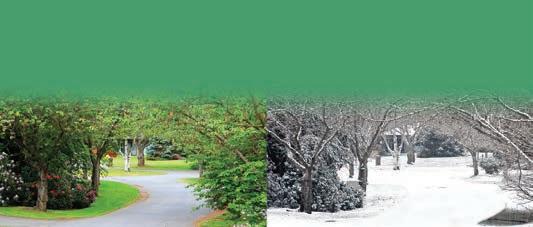
Featured Topics
• Best Practices in Turf Care
• Best Practices in Plant Care

• Emerging Equipment Trends
• Snow and Ice Management
Professional Gardening Services
Featured Topics
• Enhancement Design
• Pests and Diseases
• Container Design
• Horticulture-Centric Maintenance

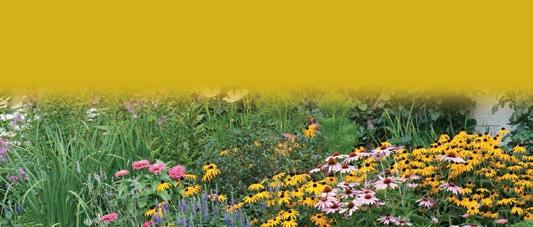
Management Path

Featured Topics
Green Industry
Economic Outlook
• Attracting and Retaining Top Talent
Garden Center/Grower
Featured Topics
• Gardening Trends – What’s Coming Next!
• New Plants
• The Soil/Water Relationship
• Increasing Consumer Success
Tree Care/Arborist

Featured Topics
• State of the Tree Care Industry
• Sales and Time Management
• How to Grow Your Tree Care Business
• Tech Talk: Software for the Arboriculture Industry
• Hot Legal Topics
• Work/Life Balance
• Developing Onboarding and Training Programs
Speaker Highlight
Alicia Rihn
University of Tennessee
Institute of Agriculture
Since 2002, Davey Twin Cities Wood Products has been a premium mulch manufacturing source for the Twin Cities and surrounding areas.
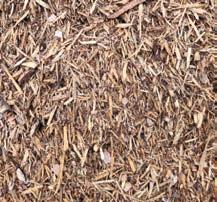


With our professional and knowledgeable staff, we strive to make each product & service provided an unmatched & outstanding experience for our clients!
Our premium mulch is made locally. Our color process only uses natural additives, making it a safe product for the environment.
Grinding is intended for large jobs. Our solution will help you recycle wood and organic material into a valuable product.
Our locally & naturally made mulch products are perfect for any environment and will beautifully enhance any landscape!
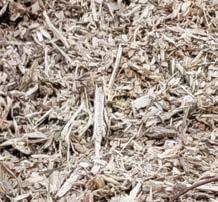









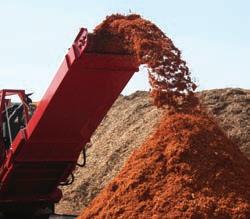
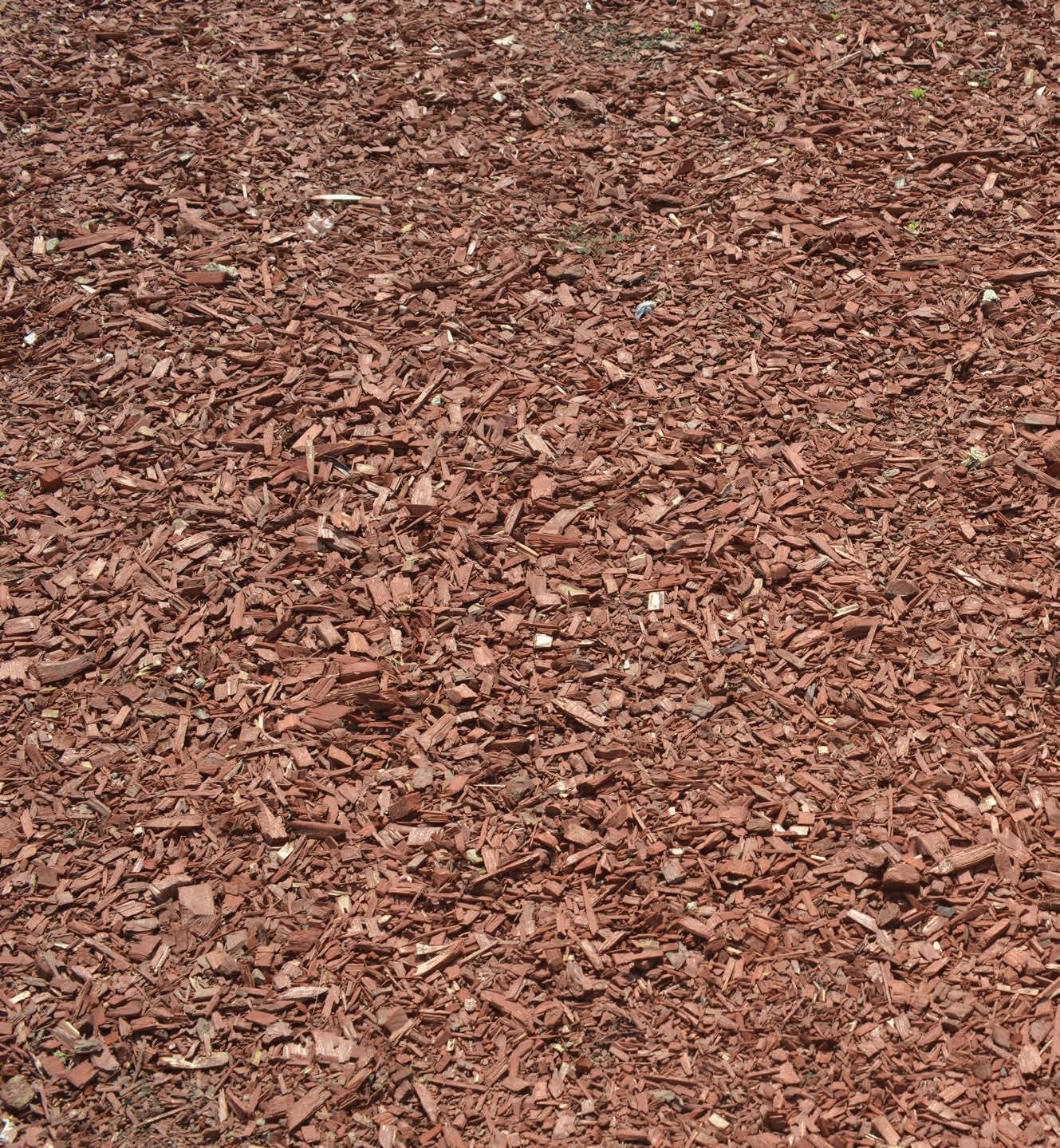
We offer next day product delivery as well commercial tree & brush disposal. Contact us for more information.

Insects and diseases can hitchhike on trees and holiday greenery brought into Minnesota from other states. The Minnesota Department of Agriculture (MDA) inspects holiday products for elongate hemlock scale, boxwood blight, round leaf bittersweet (formerly Oriental bittersweet), spongy moth, and many more pests. You can learn more about the pests and proper disposal of holiday greens on the MDA Holiday Greenery Best Management Practices webpage: www.mda.state.mn.us/holiday-greenery-best-management-practices.
If you see any signs of the following pests or others on your holiday greenery, please contact the MDA.


Elongate hemlock scale (Fiorinia externa) is found almost exclusively on the underside of conifer needles. Given their small size and inconspicuous appearance, the elongate hemlock scale may appear to be dirt or debris to the untrained eye.

Round leaf bittersweet (Celastrus orbiculatus) vines have been used in holiday decorations and other crafting items for many years. Fruiting branches, which have red berries and yellow fruit capsules, make wreaths charming but easily spread seed. Round leaf bittersweet is designated as a noxious weed on Minnesota’s Prohibited Control List. If craft arrangements, such as wreaths, are placed outside, birds can eat the fruit and move the seed to new locations.
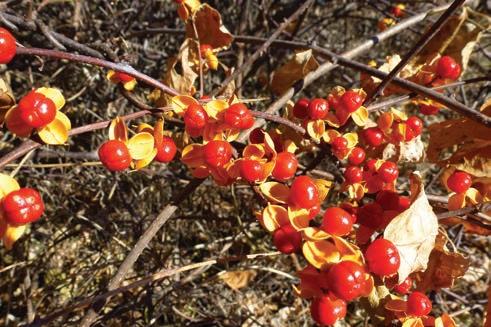


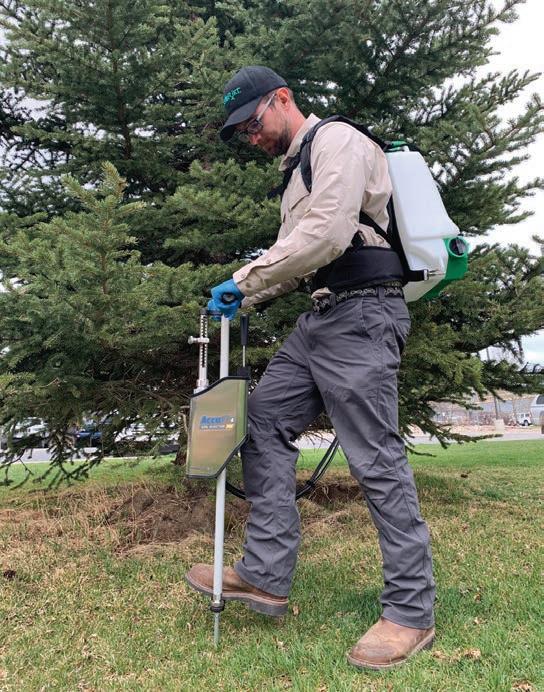
Spongy moths lay their eggs in protected areas on both natural and artificial surfaces. Christmas trees can have egg masses on trunks and branches. Egg masses are quarter-sized fuzzy, tan colored, and contain 500 - 1,000 eggs.
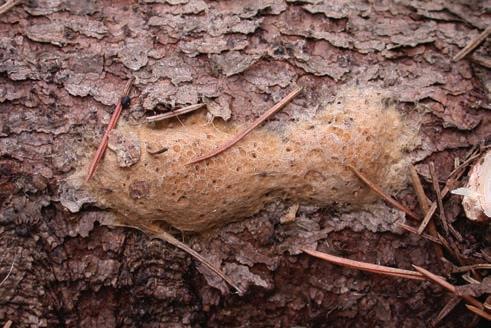
Holiday wreaths, garlands, and planters often contain shoots from boxwood plants. Boxwood is an evergreen shrub with dark green, rounded leaves. Boxwood blight is caused by the invasive fungus Calonectria pseudonaviculata. This disease causes leaf spots, stem lesions, and leaf drop in boxwoods.

Spotted lanternflies lay their eggs on both natural and artificial surfaces. Christmas trees and holiday greenery can have egg masses on trunks and branches. Egg masses are yellowish-brown in color, covered with a gray, waxy coating, and are difficult to see.
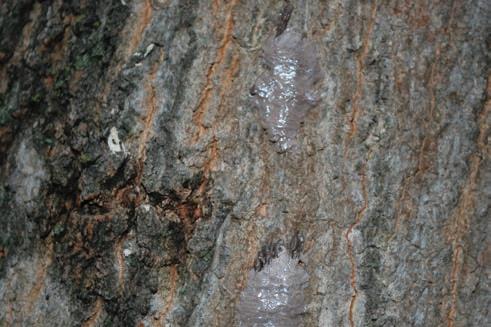
If you see an invasive pest on any Christmas tree or holiday greenery, please contact the Minnesota Department of Agriculture www.mda.state.mn.us/reportapest You can use the online reporting form, send an email, or call.
The Minnesota Grown Directory is a great resource for local holiday greenery producers and sellers to advertise their location. The public can search the online directory for local Christmas tree farms or Minnesota grown holiday greenery. Visit https://minnesotagrown.com to learn more.


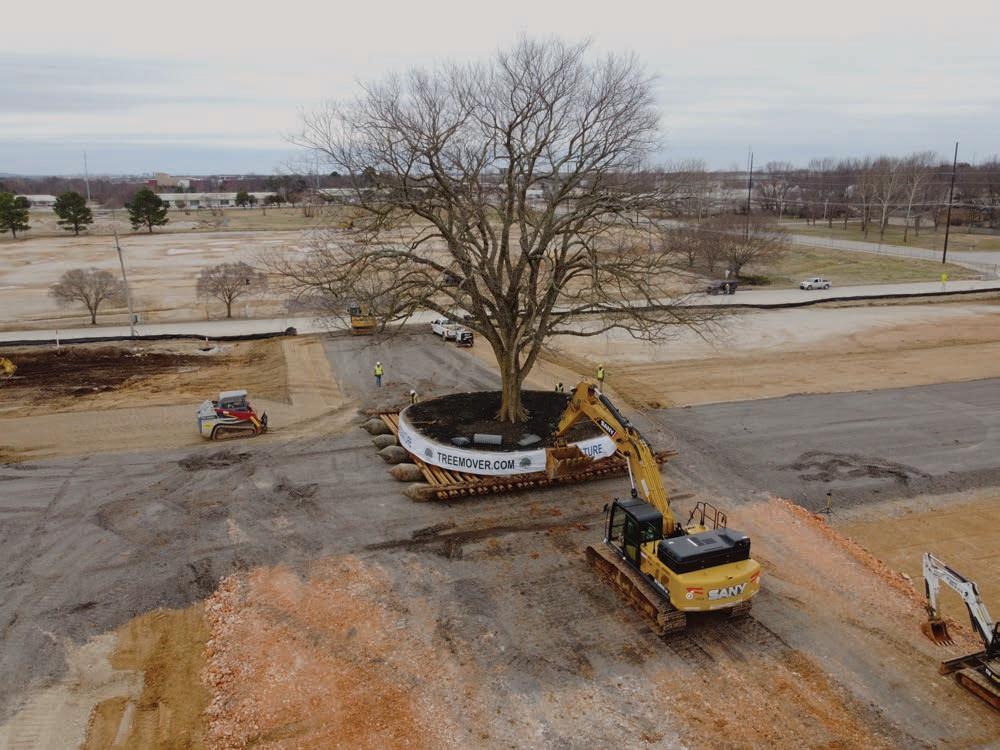


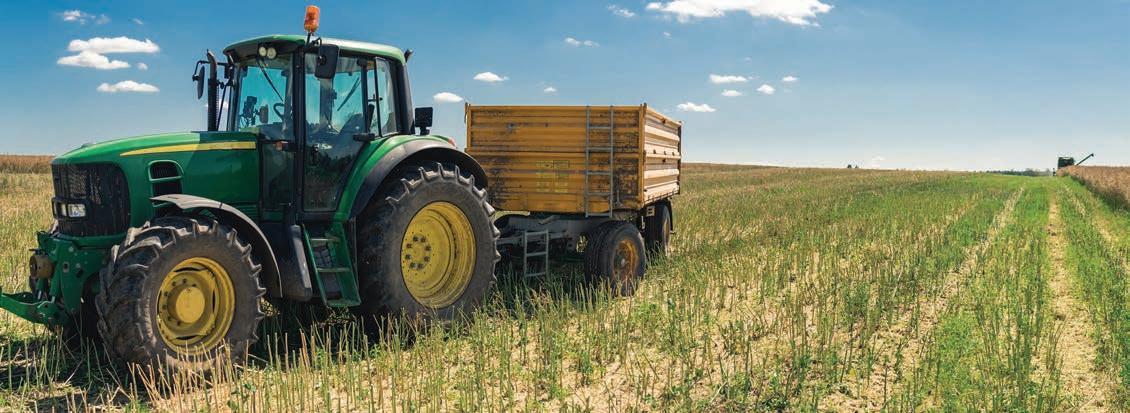




Learn about some of our newest MNLA members:
Green Bee LLC is a gardening company owned and operated by Angi Neu. With over a decade of experience as a professional gardener, Angi took the bold step of venturing into entrepreneurship this year. Her business is headquartered in North Minneapolis, and she primarily serves the northwest Metro area. Angi’s passion for gardening is evident in her own garden, where she cultivates over 75 varieties of hostas. She believes that there’s a perfect spot for at least one type of hosta in every garden. Angi is extremely thankful for her mentor, Tami Gallagher of Home Sown Gardens, who provided valuable advice on starting her own business and even gifted her a membership to MNLA.
Yard King LLC, a landscaping company, is owned and operated by Joe Myhre. Joe’s journey in the landscaping industry has been one of rediscovery. Despite stints in the cement industry and construction, he found himself continually drawn back to the world of landscaping, which he’s truly passionate about. Three years ago, Joe made the leap and founded Yard King. His primary focus is on serving the northeast Metro area, catering to both residential and commercial clients. Joe’s love for the art of landscaping is evident in his pursuit of the picture-perfect look of a well-maintained lawn, characterized by those crisp, clean stripes that signify a professional touch. As summer’s scorching days roll in, Joe’s personal advice to stay cool is simple yet valuable: pace yourself.
Welcome Green Bee LLC, Landscape Design Services LLC, and Yard King LLC!

Landscape Design Services LLC, owned by Greg Berg, brings over three decades of green industry experience to the table. Greg’s journey began in 1991 when he made the choice to trade in his desk job for the joy of working in the great outdoors. Over the years, he has traversed various locations across the United States, honing his skills in designing landscapes suited for different climates and regions. Greg’s portfolio extends nationwide, catering to residential clients with a particular emphasis on the Midwest and West. He collaborates with both homeowners and landscape contractors, bringing his creative vision to life in diverse projects. Among his favorite trees to plant locally, the Redbud (Cercis canadensis) holds a special place, but he also wishes for the flowering dogwoods (Cornus florida) to thrive in the local environment.
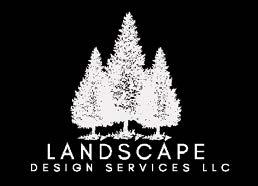
Notice is hereby given that the annual membership meeting of the Minnesota Nursery & Landscape Association will be held at 10:00 am on Wednesday, February 7, 2024, at 10:00 am via Zoom online meeting. During the annual meeting, the results of the Board of Directors election will be announced. An electronic ballot will be sent the first week in December to the primary contact provided to MNLA by each business member.

In business, change can appear in the form of new competition, disruptive market forces, and economic shifts. Our adaptability has always ensured the survival of our companies.
These days, though, with the acceleration of technology, the speed of change has increased exponentially. If businesses aren’t ready to adapt — and adapt quickly — they can be left behind, become critically exposed, or worse, put out of business.
So how can we plan for this new kind of change, the change that comes at us at breakneck speed, with the potential to disrupt or derail our industries?
I recently had a conversation with a client. He said, “Chad, I don’t want to set a long-term plan, because it’s just gonna change anyway.” While I understood the sentiment, I had to correct him. “You have to set a plan. Your plan is the baseline for your business.”
Just because we know we’re going to be managing change does not mean we get to abdicate our responsibility to set a plan for the business. Imagine a ship captain forgoing all efforts to plot a course to his destination, simply because he knew he’d eventually be sailing rough seas.
We have to chart a course based on what we know. Using objective data, we can measure our progress as we sail onward. Then, when storms blow us off course, we’ll have a better
understanding of how to shift and adapt to get back on track.
I need not remind owners of the financial crash of 2008, or more recently, the recessionary period we had just a few years back. To prepare for times like these, leaders should have contingency planning in place for negative outcomes. This includes plotting discretionary budgets and understanding which “planned spends” are nice-to-haves, not gotta-haves. And always prepare for the worst-case scenario — a reduction of force.
Conversely, if you’re in a dynamic marketplace, what happens if the market takes off? Will you be satisfied with your original goals if the market you’re in grows by 20 percent? Probably not! You might have an opportunity to make an acquisition, make some key hires, or pay off a line of credit. And so, you’ll want to have a contingency plan in place for positive outcomes so you can adjust your strategy as needed.
To truly be effective at navigating change, you need to see it coming. How often are you in exploration, learning about your industry? For many business owners, the answer is, “Rarely, if ever.” It’s time to change that: take the time to engage in regular market research, both primary and secondary.
Primary research, for example, is gathering predictions about the current state and direction of your industry or market directly from primary resources: a fellow company owner,
industry expert, or subject matter expert. Secondary research means gathering information from magazines, publications, and trade data. This is informed data from other expert sources and other markets which can inform changes that you could or should make.



One of the most effective ways to navigate change successfully is to put yourself in a peer dynamic. That means regularly sitting around a table with six to eight fellow owners, COOs, or GMs.
In peer groups, you’ll be exposed to best practices, different ways of thinking, and new processes and operations of different industries. Manufacturing company owners can glean new ideas from how an IT firm works, and vice versa. Different perspectives can inform your thinking, and you’ll easily adopt changes that can help the performance of your business.
MNLA offers the Green Industry Leadership Institute; a program led by the Resultants™ and customized to those in leadership roles within organizations. These monthly interactive sessions offer participants the opportunity to gain insights from diverse industry standpoints, fostering a collaborative environment in which they can address challenges. The program equips attendees with a comprehensive set of tools to assist them in navigating and resolving complex situations.

As birth rates continue to drop and baby boomers retire in droves, labor is going to be an ongoing challenge. Consider adopting a hybrid or remote work model to put yourself in a more competitive position for talent in the marketplace.
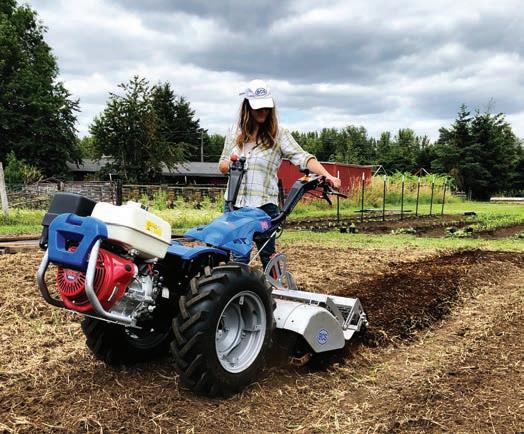

On another note, business owners have their eyes looking excitedly and warily at Artificial Intelligence. We’re only beginning to see the potential AI has in terms of sales and

To truly be effective at navigating change, you need to see it coming.
How often are you in exploration, learning about your industry? For many business owners, the answer is, “Rarely, if ever.”





marketing efforts, product development, training, and more. AI has the potential to be a big disruptor of markets, like digital in and of itself was, once upon a time. All business owners should be aware of AI and see it as an opportunity — remember, it only becomes a threat to our business if we choose to ignore it.


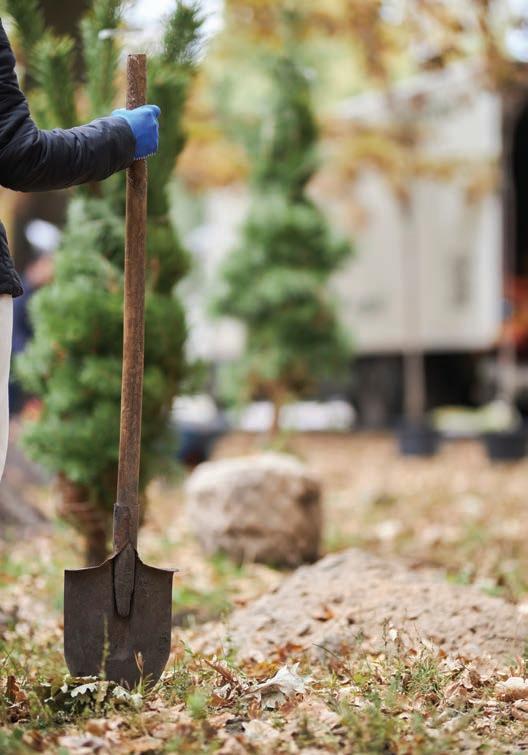
• Help Your Team Adapt and Adjust. Always communicate changes clearly to your team, and that includes communicating why the change is being made. Tell them what’s in it for the company, and more importantly, what’s in it for them, whether it’s job security, streamlined workflows, or increased revenue for future raises.

• Time Management is Key. Oftentimes, owners are so wrapped up “in” the business that they don’t have time to work “on” the business. You’re going to need to rise to the challenge of time management if you’re going to plan and prepare for change. (You can’t conduct market research or contingency planning if you’re both the owner of the sausage company and the Chief Sausage Maker!)
• Talk About Change As Opportunity. It’s important to make change planning a part of your regular communication, but it shouldn’t always be, “What are the risks? Where are the threats?” It’s important that you talk about future change as if you’re answering the question, “What’s the next big thing?” This simple change in perspective can take something potentially frightening and turn it into something inspiring.
It’s true, the world is evolving at a much faster pace than any of us are used to, but don’t allow fear or denial of change to limit your growth. It’s a lot easier to adjust and adapt to changes that we can see coming, so take the necessary steps to prepare. You don’t have to love change, but you will need to embrace it — it’s an inevitable part of being a business owner and entrepreneur.
Reprinted with permission from Landscape Leadership. The original article can be read on www.landscapeleadership.com/blog/artificial-intelligence-role-marketing-lawn-care-and-landscaping
“We are just past the high point of content marketing, but we are still flooded with content because everybody is telling everybody to produce it.”
- David C. Baker, The Business of Expertise, 2017In this article, I want to briefly touch on my (limited, to this point) personal experience using artificial intelligence (AI) to create content for marketing purposes. And, hopefully, share some insight into how I think AI can impact how you market your landscaping and lawn care services specifically. Keep in mind, when I write about “content”, I’m referring to not just written content in the form of website copy and blog articles, but also social media updates, video content, and even audio content like podcasts. It all fits in the “content” bucket in my mind.
I like to think of content as being on a spectrum from “thoughtless” to “thought-ish” to “thoughtful”. (“Thoughtless” being a zero and extremely “thoughtful” being a 10.) I also like to thank David C. Baker, from whom I’m borrowing this idea. I’ll describe these categories below and then talk about how I see the role of AI along this spectrum.
You know what this looks like. It’s content for content’s sake, or “content pollution” as Baker so precisely describes it. Many of you are or have been, guilty of this. Your SEO company’s justification was, “You need content to feed Google” so your company website is littered with 300-word blog posts full of boastful hyperbole. Aside from being one-sided, this type of garbage content gives visitors a massive letdown because their
AI tools can help you create outlines for an article or even video. It gets you moving quickly instead of staring at a blank page.
expectations are unfulfilled. The clickbait headline promises one thing and the content that follows disappoints.
Thoughtless content is a waste of effort for the reader and your company.
This type of content is more helpful (i.e.- educational) than insightful. As Baker says, “It’s not thoughtless, but it’s not thoughtful either.”


When executed properly, this is valuable content for a lawn care or landscaping company. This is when you actually teach your audience something useful whether it directly impacts your company or not.

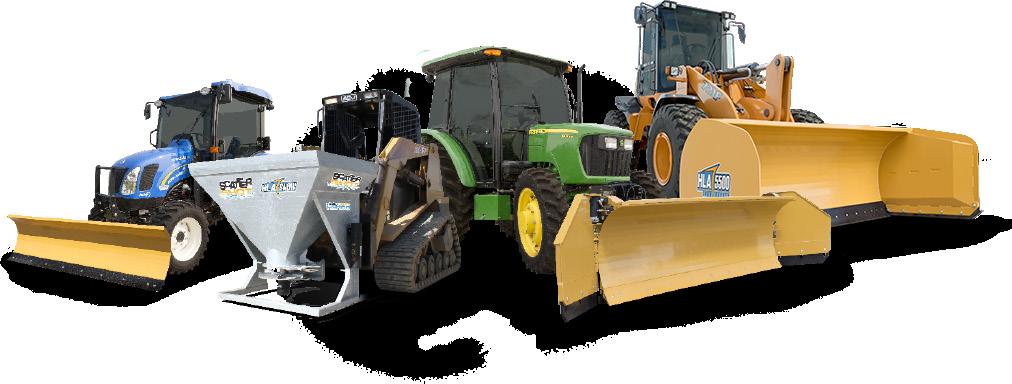
This is the most valuable content for search engine optimization (SEO) and attracting visitors to your website via organic search.
Many of your potential clients are not seeking a unique perspective on a subjectthey just want an answer to a simple question. And they want it fast. Thoughtish content can fill this role beautifully.



Here are a few examples:


• Video: How and When to Prune a Hydrangea the Right Way
• Article: Comparing Concrete Pavers to Poured Concrete (including Cost Considerations)

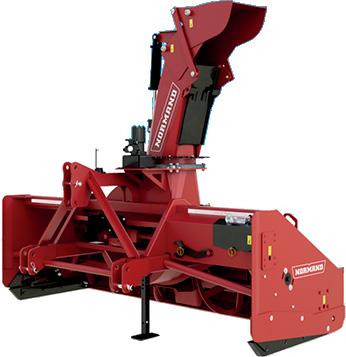
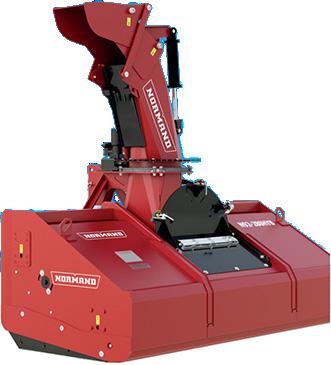

• Article: The 5 Best Ornamental Trees to Plant Near a Patio (and 3 You Should Never Plant)
You get the point. This type of content should play a role in every content marketing strategy. Your goal should be to shoot for a 6 or 7 out of 10 on the spectrum rather than a 3 or 4.
To me, “Thoughtful” means sharing a personal insight or opinion that may or may not appeal to a majority of readers. It’s your unique thoughts on a subject. This type of content often presents a viewpoint that can be polarizing. The reader may not agree with you on every point, but they’ll walk
away considering your words nonetheless. It can really stir emotions. That’s why video and podcasting are best for this type of content in my view.
Many companies in the lawn and landscape industry fail to produce thoughtful content simply because they don’t have a unique viewpoint on various subjects. Many times they are afraid to share in the risk of offending someone. And it can be difficult to create! Thoughtful content has to come from within your company - your marketing agency cannot create it for you (sorry, wish we could).

Let me make a bigger point here: Not all companies require thoughtful content. Much depends on your audience and how you’re positioned. The higher you want to reach then the more thoughtful your insight needs to be. If you are a B2B company targeting CEOs of large
Chad E. Buran, ASLA|PLA Owner





"Working with The Resultants Team has been critical to getting our Leadership Team talking and aligning around a common vision and future for Margolis Company. The gentle reminders for us to focus time to work “on the business” versus “in the business,” have been key to making continual progress and improvements for our team."
companies, then the content you produce better be pretty compelling and provide some unique perspective otherwise your content will go unnoticed. The best strategy is to have a mix of thought-ish and thoughtful content. Shoot for seven and above on our content spectrum.

So, what role can artificial intelligence (AI) play in this? Based on my experience with AI to this point, it can absolutely play an important role in content creation. That said, it shouldn’t be a crutch. It’s just another tool. You can churn out thoughtless content all day with AI tools like ChatGPT, however, I wouldn’t recommend it. You’ll just be adding to the existing content pollution, and it will go unnoticed anyway, like 99% of thoughtless content on the web.
The most practical role for AI is for assisting with creating your thought-ish content. As an example, AI tools can help you create outlines for an article or even video. It gets you
moving quickly instead of staring at a blank page. AI can help you uncover questions or points to discuss in your article that you may have overlooked. AI tools can help you (or your writer) expand on a point or even rewrite something you’re not happy with. In these ways, AI content tools are very helpful. It’s “assisting” you, not “replacing” you or your writer. That’s an important distinction. Nor is AI able to craft and oversee a content strategy. You still need humans for most of this. Thoughtful content and meaningful insight will remain valuable to your customers and prospects. LinkedIn will remain a terrific platform for sharing your personal insights like this. The same can be said for video and podcasting.
AI tools will surely add more thoughtless content to the world, but your personable, thoughtful insight can still rise to the top and reach your audience if you do it right. As time goes on, we’ll learn and experiment with more AI content tools at Landscape Leadership and will be sure to update all of you on what we think can be most useful to you and your business.
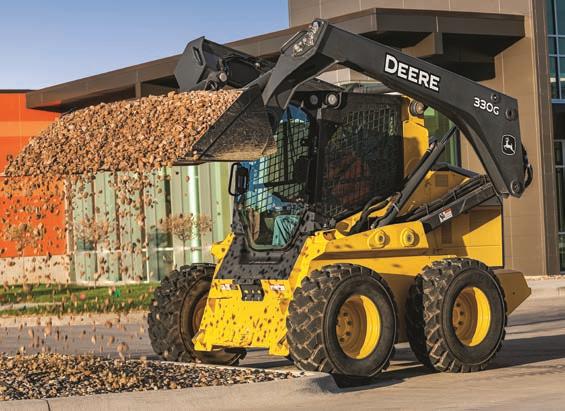
• Rated Operating Capacity: 1362 kg (3,000 lb.)

• Gross Horsepower: 68.0 kW (91.2 hp)
• Net Horsepower: 66 kW (88.5 hp)
• Operating Weight: 4495 kg (9,900 lb.)

• Net Power: 39.6 kW (53 hp)
• Max Digging Depth: 3.77 m (12 ft. 4 in.)
• Operating Weight: 6180 kg (13,620 lb.)

For more information visit mmcjd.com to find a dealer near you.


With the fast-paced digital environment we live in, it’s no wonder attention spans have dramatically decreased. Information is at our fingertips as fast as you can type in your question, so it makes sense that social media has evolved to match our readily subject-changing minds. Short, rapid-fire videos or tidbits of information need to “hook” your audience’s attention within the first few seconds, or they will continue to scroll, and you miss your chance entirely. No matter where you fall within the green industry, embracing social media can unlock tremendous opportunities for growth (pun intended). In order to stand out on social media and “hook” your viewer’s attention, something about your content or product should be unique. This could be the way you present your material (with humor or by including animals for example), it could be your style and what aesthetics you choose, or it could be highlighting why they should be buying your product because of unique features x, y, and z. Leveraging the platforms available to you can elevate your business and make the difference in attracting and retaining customers.
If you currently feel like you put work into your social media channels, but don’t feel the return is worth the effort, that’s okay. It takes time to build a following and find what works best for your business. One of the best ways to engage with your current and future customers is to showcase your expertise and credibility. Highlight success stories, share the beautiful before and after landscaping photos, or show off the bright and shiny new plants you just got in. If done well and consistently, it will instill confidence that you are an expert and should be viewed as one.
Another way to build credibility is to share your involvement your community or with other organizations/associations. For example, many consumers value locally grown products and very well might purchase a slightly more expensive product if that means they get to support Minnesota businesses. An extremely quick and easy way to accomplish this is by using the Minnesota Grown logo on any product you sell that has been at least 80% grown in Minnesota. It takes hardly any extra time to include, and markets itself for you, easing some of the burden off your plate. When consumers see a cause they care about showcased on your social media, or outside your business, they will feel a connection that can spark an interest in your products. Partnering with organizations like Minnesota Grown not only emphasizes your commitment to local quality but also opens doors to new marketing opportunities and collaborations within the green industry. By combining savvy social media content and strategic partnerships, your green business can thrive in today’s competitive market.
To join Minnesota Grown, visit www.minnesotagrown.com.








